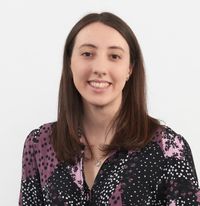Chase slashes its easy-access savings rate – is it time to switch?
The Chase easy-access savings account has proved popular with savers thanks to its competitive rate and bonus deals. But, as the rate has dropped, has it lost its charm?


Note: the rates mentioned in this article have disappeared. Please see our up-to-date article on the Chase saver for the latest rates.
Chase customers have seen the rate on their easy-access savings account plummet after the bank – a MoneyWeek Readers' Choice favourite – dropped rates on 8 August, following the Bank of England base rate cut.
The account now pays 3.85% – down from 4.1% AER. The digital challenger bank, owned by JP Morgan, offers a tracker savings rate – 1.15% less than the Bank of England base rate. This means savers could see their interest rate fall further if the base rate is cut again later this year.
MoneyWeek
Subscribe to MoneyWeek today and get your first six magazine issues absolutely FREE

Sign up to Money Morning
Don't miss the latest investment and personal finances news, market analysis, plus money-saving tips with our free twice-daily newsletter
Don't miss the latest investment and personal finances news, market analysis, plus money-saving tips with our free twice-daily newsletter
With this in mind, some savers may be starting to ask themselves whether a tracker rate is still their best bet.
“There are only a handful of easy-access accounts that have their interest rate tied to the Bank of England base rate, but even so, it’s important savers check the terms and conditions carefully on their account so they can be prepared for any rise or fall,” says Rachel Springall, finance expert at Moneyfacts.
Chase has been offering a range of deals in recent months to entice savers, including attractive bonus rates on top of the underlying base rate tracker. However, some of these savings deals have now been pulled from the market, meaning savers need to move quickly to avoid missing out on good rates.
In recent months, Chase has also diluted some of the benefits enjoyed by its current account customers. The 1% interest that customers had been earning on their current account balances was axed on 5 August 2024. This means Chase customers have faced a double-whammy of interest rate cuts.
Some savers are currently enjoying a 1% boost on top of the standard Chase savings rate, thanks to a bonus deal that was available on the market until 17 July. However, even if you were lucky enough to catch this offer before it was pulled, it comes to an end on 16 January 2025, bringing a hint of the January blues to your savings pot.
Will Chase cut its savings rate again this year?
The answer to this question largely depends on the Bank of England, as Chase’s rate is linked to the UK base rate. If you are a Chase savings customer, the good news is that central banks usually cut rates far more slowly than they raise them. Experts have been pointing to the old adage that rates tend to rise like a rocket but fall like a feather.
The Bank of England was cautious in the language that it used after its last base rate meeting, when it cut the benchmark rate from 5.25% to 5%. It said interest rates would need to “continue to remain restrictive”, and added that inflation is expected to rise to around 2.75% in the second half of the year.
The MPC also remained visibly divided, with the voting split coming in at 5-4. “The fact four out of nine members wanted to keep rates on hold shows there is still a considerable amount of hawkishness in the interest rate committee,” says Laith Khalaf, head of investment analysis at AJ Bell.
Nevertheless, barring any shocks, interest rates appear to be on a downward trajectory. The International Monetary Fund (IMF) thinks the base rate will fall to 3.5% by the end of 2025, and markets are currently pricing in another cut later this year. So, unless Chase changes the terms and conditions of its easy-access savings account, the rate on offer to savings customers will fall with each base rate cut.
Of course, Chase isn’t unique in this respect. Other competitors are also lowering their rates in line with market conditions, even if their products aren’t directly linked to the Bank of England’s benchmark rate.
How does Chase’s rate stack up against competitors?
Since launching its retail banking operation in the UK in September 2021, Chase has offered its customers highly competitive rates. As recently as July, savers could earn up to 5.1%. However, over the course of this year, the bank’s proposition has become less attractive.
In May, the rate became tied to the Bank of England base rate, which was widely expected to fall over the course of the year. Then, on 17 July, the 1% bonus deal was pulled, bringing the overall rate down to 4.1% for new customers. This means that even before the planned cut to Chase’s rate, it was no longer a best-buy product. The top easy-access savings accounts on the market are currently paying rates north of 5%.
Despite this, Chase still pays above the market average, which is currently 3.13% for easy-access accounts, according to Moneyfacts. What’s more, as Springall points out, the Chase account also offers complete flexibility.
“There are easy-access accounts out there which pay higher rates, but not every account will permit unlimited withdrawals, so it is vital savers make sure to check any restrictive criteria,” she adds.
These are the top easy-access rates currently on the market.
| Top rates on a balance of £10,000 | Interest (annual equivalent rate) | Details |
|---|---|---|
| Ulster Bank Loyalty Saver | 5.20% | Full rate only paid on balances over £5k. |
| Principality Building Society Online Bonus Triple Access | 5.00% | Rate includes a 1.40% bonus paid for 12 months. Limited to three withdrawals per calendar year including closure. |
| Paragon Bank Double Access Saver | 4.91% | Limited to two withdrawals per year. On your third withdrawal, the rate drops to 1.5% AER. |
Rates are correct at the time of publishing. See our guide to the best savings accounts for up-to-date savings rates.
While Ulster Bank is currently offering the highest rate on a balance of £10,000, it is worth remembering that none of these deals are likely to hang around for long now that the base rate has fallen to 5%.
As the chopping and changing in Chase’s rate shows, the savings market is rapidly evolving and the only way to lock in a guaranteed income is to fix your savings for an agreed period.
At the time of writing, the best one-year fixed-rate savings account is paying more than 5% interest, giving savers guaranteed income for a year. For more information, see our round-up of the best one-year fixed-rate savings accounts.
Get the latest financial news, insights and expert analysis from our award-winning MoneyWeek team, to help you understand what really matters when it comes to your finances.
Katie has a background in investment writing and is interested in everything to do with personal finance, politics, and investing. She previously worked at MoneyWeek and Invesco.
-
 ‘Why I have ditched my Help to Buy ISA for cash savings and the stock market’
‘Why I have ditched my Help to Buy ISA for cash savings and the stock market’Without the 25% bonus, my Help to Buy ISA is effectively redundant, says MoneyWeek writer Sam Walker.
-
 Is your inheritance tax allowance cut if you sell to downsize or sell your home to pay for care?
Is your inheritance tax allowance cut if you sell to downsize or sell your home to pay for care?Downsizing relief is a little-known benefit that could save your loved ones tens of thousands of pounds in inheritance tax after you’ve died.
